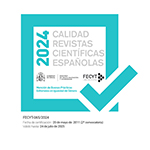El mundo del trabajo indígena urbano de Charcas (actual Bolivia) en el siglo XVII
Resumen
Este trabajo explora las relaciones laborales de los indígenas residentes en cinco ciudades de Charcas, actual Bolivia, a fines del siglo XVII. Se basa en el análisis de las categorías fiscales incluidas en los padrones originales de la Numeración General ordenada por el virrey duque de La Palata, y en otros elementos tales como la presencia o ausencia de beneficiarios directos del trabajo indígena, el destino de los tributos y el lugar de trabajo. Se analizan, asimismo, las ausencias de algunas categorías específicas que deja de manifiesto la comparación. En forma complementaria se incluyó el análisis de expedientes judiciales. La Numeración muestra ciudades muy diferentes en su composición, diferencias que se explican por las decisiones personales que tomaron quienes empadronaron las ciudades ante la falta de instrucciones específicas, así como por los diferentes desarrollos históricos que tuvo cada una. El artículo profundiza el análisis de quienes estaban destinados al servicio de las instituciones públicas y eclesiásticas de las ciudades de La Paz y La Plata. Finalmente se proponen diferencias en términos de las libertades relativas de las que gozaban los diferentes tributarios.
Descargas
Descarga artículo
Licencia
La Revista Complutense de Historia de América, para fomentar el intercambio global del conocimiento, facilita el acceso sin restricciones a sus contenidos desde el momento de su publicación en la presente edición electrónica, y por eso es una revista de acceso abierto. Los originales publicados en esta revista son propiedad de la Universidad Complutense de Madrid y es obligatorio citar su procedencia en cualquier reproducción total o parcial. Todos los contenidos se distribuyen bajo una licencia de uso y distribución Creative Commons Reconocimiento 4.0 (CC BY 4.0). Esta circunstancia ha de hacerse constar expresamente de esta forma cuando sea necesario. Puede consultar la versión informativa y el texto legal de la licencia.











